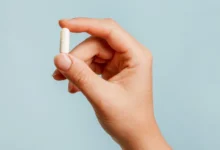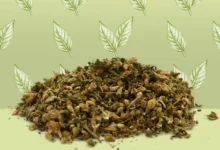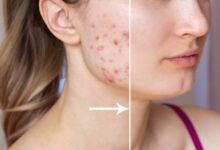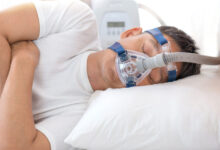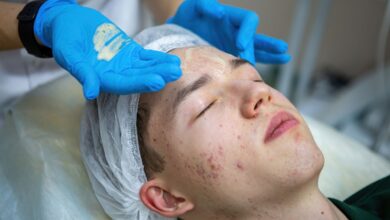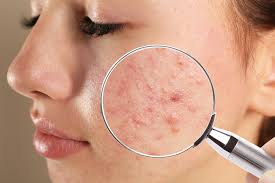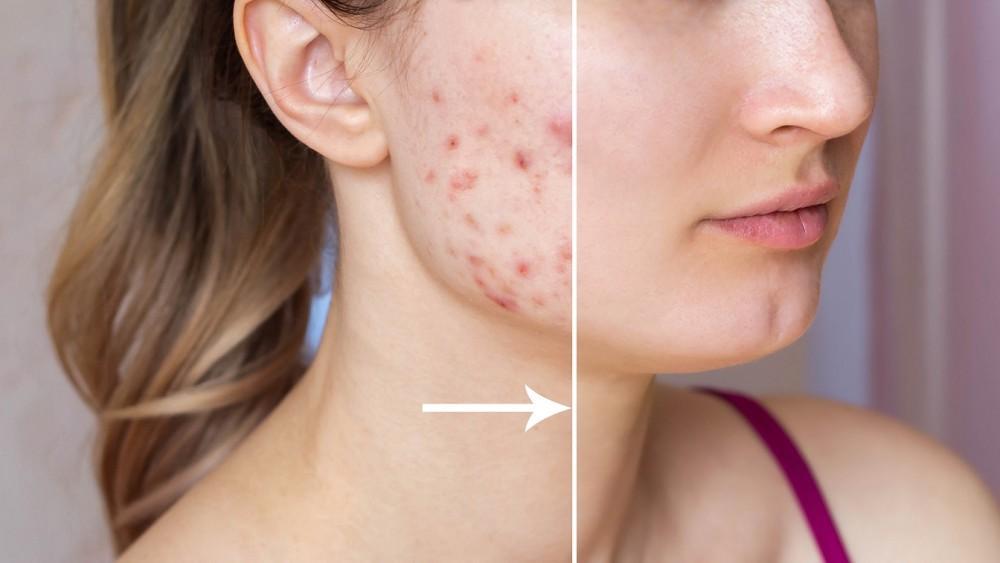
Best Acne Scar Treatment in Singapore: What Really Works for Every Scar Type
Table of Contents
Acne Scar Treatment
Do you see indented marks every time you look in the mirror, reminders of past acne battles that refuse to fade? Acne scars form when inflammation damages deeper skin layers, leading to uneven collagen repair and resulting in raised or depressed textures. Finding the Singapore best acne scar treatment starts with identifying your scar type and understanding how the city’s tropical climate, with its high humidity and strong sun exposure, affects skin healing and treatment outcomes.
Types of Acne Scars
Ice Pick Scars
Ice pick scars appear as narrow, deep indentations that extend into the dermis. These V-shaped scars typically measure less than 2mm across but can penetrate several millimeters deep. They develop from infected cystic acne that destroys tissue in a columnar pattern. The narrow opening makes these scars challenging to treat with surface-level procedures.
TCA CROSS (Chemical Reconstruction of Skin Scars) targets ice pick scars by applying trichloroacetic acid directly into each scar. The acid stimulates collagen production from the base upward, gradually filling the depression over multiple sessions spaced 4-6 weeks apart.
Rolling Scars
Rolling scars create an undulating texture across the skin surface, resembling gentle hills and valleys. These scars form when fibrous bands develop between the skin and underlying structures, pulling the epidermis downward. Rolling scars typically measure 4-5mm wide and have sloped edges that blend into surrounding skin.
Subcision breaks these fibrous bands using a specialized needle inserted parallel to the skin surface. The procedure releases tethered skin while creating controlled injury that stimulates new collagen formation. Patients often see immediate improvement from the mechanical release, with continued enhancement over 3-6 months as collagen remodels.
Boxcar Scars
Boxcar scars present as round or oval depressions with sharp, defined edges. These scars range from shallow (0.1-0.5mm) to deep (>0.5mm) and typically measure 1.5-4mm in diameter. They result from inflammatory acne that destroys collagen, leaving behind a depression when the inflammation subsides.
Fractional CO2 laser resurfaces boxcar scars by creating microscopic treatment zones that penetrate deep into the dermis. The laser removes damaged tissue while heating surrounding areas to stimulate collagen production. Recovery involves 5-7 days of redness and peeling, with results visible after 2-3 months.
Hypertrophic Scars
Hypertrophic scars appear as raised, firm masses of tissue at sites of previous acne lesions. Unlike keloids, these scars remain within the boundaries of the original wound. They form when the body produces excess collagen during healing, creating elevated scar tissue that may feel tender or itchy.
Intralesional corticosteroid injections flatten hypertrophic scars by reducing collagen synthesis and increasing collagen breakdown. Treatment protocols should be determined by a healthcare professional. Patients typically require multiple sessions for optimal flattening.
Laser Treatments for Acne Scars
Fractional CO2 Laser
Fractional CO2 laser creates controlled thermal damage in columnar zones while leaving surrounding tissue intact. The laser penetrates 0.5-2mm deep, depending on settings, vaporizing water in skin cells to remove damaged tissue. This dual action – ablation and coagulation – addresses both surface irregularities and deeper structural problems.
Treatment parameters vary based on scar depth and skin type. Energy levels range from 10-70mJ per microbeam, with density settings of 5-20% coverage. Higher settings provide more dramatic results but require longer recovery. Most patients need 2-4 sessions for improvement.
Post-treatment care involves applying prescribed healing ointments as directed by a healthcare professional. Skin remains red and swollen for 2-3 days, followed by bronzing and peeling that lasts 5-7 days. Complete healing occurs within 10-14 days, though redness may persist for several weeks.
Pico Laser
Pico laser delivers ultra-short pulses measured in picoseconds (trillionths of a second), creating photoacoustic impact that breaks apart pigment and stimulates remodeling without thermal damage. The laser’s 755nm or 1064nm wavelengths target different depths, addressing both superficial texture and deeper scarring.
Focus lens array technology concentrates laser energy into microscopic spots, creating laser-induced optical breakdown (LIOB) in the dermis. These microscopic injuries trigger collagen and elastin production without disrupting the skin surface. Patients experience minimal downtime – usually just mild redness for 2-4 hours.
Treatment protocols typically involve sessions every 4 weeks, with gradual improvement visible after each session. The nature of pico laser makes it suitable for all skin types, including darker skin that may hyperpigment with aggressive treatments.
Fractional Radiofrequency
Fractional radiofrequency delivers thermal energy through microneedles that penetrate 0.5-3.5mm into skin. The needles emit radiofrequency energy at their tips, creating controlled coagulation zones in the dermis while sparing the epidermis. This approach minimizes surface damage while maximizing dermal remodeling.
Insulated needles protect the upper skin layers, reducing post-inflammatory hyperpigmentation risk common in certain skin types. Energy delivery occurs in millisecond pulses, with power settings adjusted based on scar depth and skin thickness. The combination of mechanical needling and thermal injury provides dual stimulation for collagen production.
Chemical Peels and Resurfacing
TCA Peels
Trichloroacetic acid peels at 15-35% concentration may help treat acne scars by removing damaged skin layers and stimulating regeneration. The acid denatures proteins in the epidermis and papillary dermis, causing controlled injury that triggers healing responses. Depth of penetration depends on concentration, application technique, and number of layers applied.
Medium-depth peels (25-35% TCA) may address moderate scarring by reaching the papillary dermis. The skin frosts white immediately upon application, indicating protein coagulation. Over 7-10 days, treated skin darkens, tightens, then peels away to reveal smoother texture underneath.
Pre-treatment preparation should be discussed with a healthcare professional, who may recommend using tretinoin to normalize keratinization and enhance penetration. Post-peel care requires gentle cleansing, frequent moisturizer application, and strict sun avoidance during the healing phase.
Glycolic Acid Peels
Glycolic acid’s small molecular size allows deep penetration, making it a treatment option for mild acne scarring. Concentrations of 30-70% create controlled exfoliation that may improve skin texture and reduce shallow scar depth. The alpha-hydroxy acid weakens lipid bonds between corneocytes, promoting desquamation and cellular turnover.
Serial peels may provide cumulative benefits when performed by a qualified professional. Each treatment removes a thin layer of damaged skin while stimulating fibroblast activity in the dermis. The graduated approach minimizes complications while achieving gradual improvement over time.
Injectable Treatments
Dermal Fillers
Hyaluronic acid fillers elevate depressed scars by adding volume beneath the skin surface. The gel-like substance integrates with tissue water, creating correction that lasts 6-12 months. Different filler viscosities suit different scar types – softer fillers for shallow scars, firmer products for deeper depressions.
Injection technique varies by scar morphology. Linear threading fills elongated scars, while serial puncture or fanning techniques address wider depressions. Small volumes (0.1-0.3ml per scar) prevent overcorrection and lumpiness. The filler also stimulates some collagen production, providing modest long-term improvement even after the product dissolves.
Rejuran Scar
Polynucleotide injections containing salmon DNA fragments promote tissue repair through multiple mechanisms. The DNA polymers activate fibroblasts, increase growth factor production, and enhance angiogenesis. These biological responses improve scar texture, elasticity, and color over time.
Treatment involves multiple intradermal injections using a fine needle to deposit small amounts throughout the scarred area. The grid pattern ensures even distribution and optimal tissue response. Treatment protocols typically recommend 3-4 sessions at 3-4 week intervals, with maintenance treatments every 6 months.
Post-Treatment Care
Sun protection after acne scar treatment prevents post-inflammatory hyperpigmentation and supports healing. Broad-spectrum sunscreen with SPF 30 or higher should be applied every 2 hours during sun exposure. Physical blockers containing zinc oxide or titanium dioxide may cause less irritation on healing skin than chemical sunscreens.
Gentle skincare supports recovery without disrupting the healing process. Mild, fragrance-free cleansers remove debris without stripping natural oils. Ceramide-based moisturizers restore barrier function while hyaluronic acid serums maintain hydration. Avoiding active ingredients like acids and retinoids for 1-2 weeks post-treatment may help prevent irritation.
Signs of normal healing include mild swelling, redness, and tightness for several days post-treatment. Abnormal responses that may require medical attention include expanding redness, increasing pain, yellow discharge, or fever. These symptoms may indicate infection that could require evaluation by a healthcare professional.
Treatment Timeline and Expectations
Initial consultation involves scar assessment using standardized grading scales. The dermatologist evaluates scar type, depth, distribution, and skin phototype to develop a treatment plan. Photographic documentation tracks progress throughout the treatment course.
Visible improvement typically begins after 2-3 treatment sessions, with results at 6-12 months. Collagen remodeling continues for several months after final treatment. Many patients may achieve improvement in scar appearance with appropriate treatment selection.
Factors affecting treatment response include scar age, depth, patient age, and skin healing capacity. Newer scars often respond differently than old, fibrotic scars. Younger patients with robust healing responses may see different outcomes.
Did You Know?
The dermis takes approximately 3-6 months to fully remodel collagen after laser treatment, which explains why final results aren’t immediately visible. This gradual improvement continues even after completing treatment series.
Putting This Into Practice
- Document your scars with close-up photos in consistent lighting to track treatment progress objectively
- Schedule treatments during periods when you can accommodate downtime, avoiding important events for at least 2 weeks post-procedure
- Establish a consistent skincare routine with gentle products at least one month before starting treatments
- Plan your treatment timeline allowing adequate healing between sessions
- Prepare your post-treatment supplies in advance, including medications as recommended by your healthcare provider, gentle cleansers, and healing ointments
When to Seek Professional Help
- Scars that cause physical discomfort or restrict facial movement
- Deep indentations visible from conversational distance
- Scarring accompanied by active cystic acne requiring medical management
- Hyperpigmentation persisting more than several months after acne resolution
- Raised scars that continue growing or feel tender
- Any scarring causing emotional distress or social anxiety
Commonly Asked Questions
How many treatment sessions will I need for my acne scars?
Treatment frequency depends on scar severity and chosen modality. Mild scarring may improve with 2-3 laser sessions, while severe scarring often requires 4-6 treatments. Some patients benefit from maintenance sessions every 6-12 months to sustain results.
Can acne scars be completely removed?
Complete scar elimination rarely occurs, but significant improvement is achievable. Many patients experience substantial reduction in scar visibility with treatment. The goal focuses on improving skin texture and reducing scar prominence rather than complete removal.
What’s the difference between acne marks and acne scars?
Acne marks are flat, discolored spots (post-inflammatory hyperpigmentation or erythema) that fade over months. True acne scars involve textural changes – either indentations or raised areas – that persist without treatment. Marks respond to topical treatments and chemical peels, while scars require procedural interventions.
Can I treat acne scars at home?
Home treatments like retinoids and vitamin C serums provide modest improvement for mild scarring and help maintain professional treatment results. However, significant textural scarring requires professional procedures to achieve meaningful improvement. Over-the-counter options work best as adjuncts to clinical treatments.
Will my acne scars return after treatment?
Treated scars don’t return, but new scars can form if acne recurs. Maintaining clear skin through acne management prevents new scar formation. Results from treatments like laser resurfacing and subcision are generally long-lasting, though some procedures like fillers require periodic touch-ups.
Next Steps
Professional scar assessment enables accurate classification and personalized treatment selection. Multiple treatment modalities – laser technologies, chemical resurfacing, and injectable treatments – provide comprehensive improvement when properly combined.
If you are experiencing persistent indented scars, raised scarring, or uneven skin texture from previous acne breakouts, schedule a consultation with a dermatologist to evaluate your treatment options.

